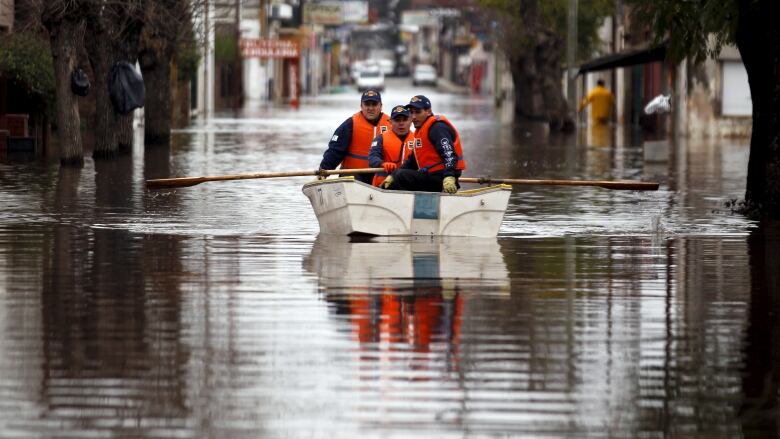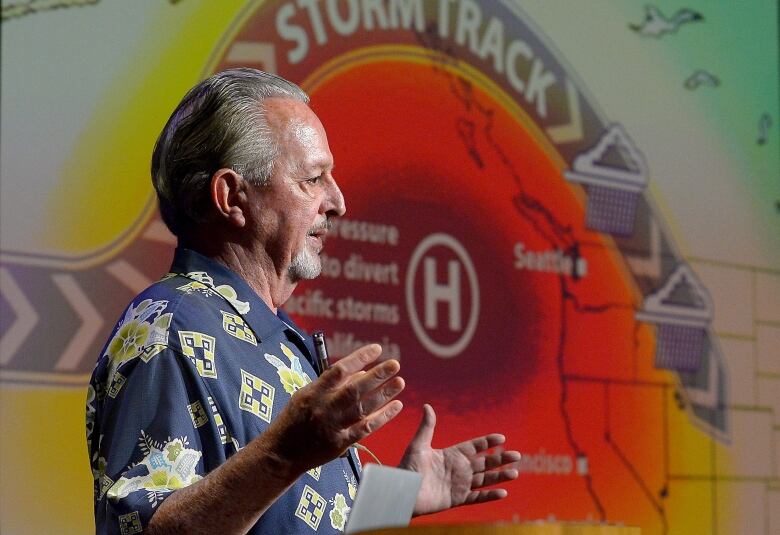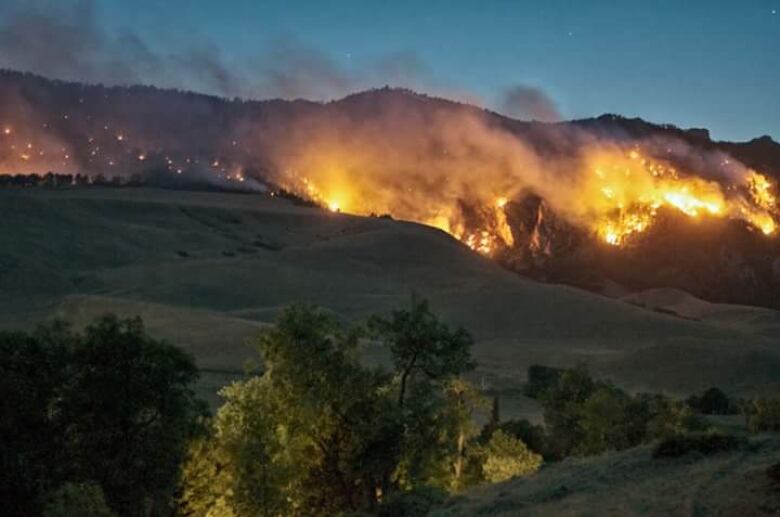El Nino this year could be a record-breaker
Nicknamed Bruce Lee, weather pattern could turn out to be strongest on record, meteorologists say

The current El Nino, nicknamed Bruce Lee after the late action hero, is already the second strongest on record for this time of year and could be one of the most potent weather changers of the past 65 years, meteorologists say.
While its effect on Canada will be minimal, the weather system is already causing deadly droughts and floods across the globe.
- El Nino weather system appears for 1st time since 2010
- El Nino drought spurs new cargo limits in Panama Canal
An El Nino is a temporary change of climate that happens every few years, when winds shift in the Pacific Ocean along the equator, warming the water more than usual. These El Nino events trigger changing weather patterns globally.
Satellite measurements show that this El Nino could eventually rival the king-sized one in 1997-98 the strongest since record-keeping began in 1950 when it reaches its peak in the months to come.
"We're predicting that this El Nino could be among the strongest El Ninos on record, dating back to 1950," Mike Halpert, deputy director of the National Oceanic Atmospheric Administration's Climate Prediction Center, said.
An NOAAblognicknamed it Bruce Lee because of its strength, whileNASA oceanographer Bill Patzert compared it to Godzilla for the mudslides and destruction it can cause.

Milder weather for Canada
El Nino will likely bring warmer-than-usual weather to Western Canada, GerhardReuter, a professor of Earth and Atmospheric Sciences at the University of Alberta, told CBC News.
"El Nino is typically is associated with warmer temperatures over Western Canada," Reuter said. "This fall and winter, we'll have milder weather over B.C., Alberta, Saskatchewan and Manitoba."
In May, experts blamed El Nino for speeding up nature's clock and forcing firefighters to deploy weeks ahead of normal to battle wildfires across rural Western Canada.
B.C. may get dryer

Drought-struck areas better not count on El Nino rescuing them like in a Bruce Lee action movie, experts said. CBC meteorologist Johanna Wagstaffe said dry conditions could worsen in B.C.
"Even though no two El Ninos are same, the fact that we are already dealing with a warmer than normal area of warm ocean temperatures off the coast of B.C. will likely add to the outlooks of a warm and dry next few seasons for the western half of the country," she said.
"So, unfortunately, there is higher confidence that B.C. will have to deal with drier than normal conditions for a few months to come. And that will continue to have impacts on the already dire fire and drought situation."
Dry weather in B.C. has prompted widespread water restrictions and aided in the spread of an aggressive wildfire that forced hundreds of people from their homes Thursdayafternoon near Rock Creek.
California droughts
Halpert said California residents shouldn't hang their hopes on El Nino, either
"A big El Nino guarantees nothing," Halpert said. "At this point there's no cause for rejoicing that El Nino is here to save the day."
California needs 1 times the amount of normal rainfall to pull itself from drought, he said.

Chances are 50-50 of the El Nino delivering a wet winter, said California's state climatologist Michael Anderson. Since 1958, there have been seven El Nino systems three wet, three dry and one average.
Ryan Jacobsen, executive director of the Fresno County Farm Bureau, said farmers aren't fooled by a common misconception that El Nino always translates into a wet winter.
"The one constant with Mother Nature is that she's always changing," Jacobsen said.
Central America food emergency
Nearly one million people in Guatemala are struggling to feed themselves as poor rainfall has led to drought and shrunken harvests, worsening hunger among the poor, the UN Food and Agriculture Organization (FAO) said.
Linked to the El Nino weather phenomenon, this year's drought has hit subsistence farmers living in Central America's "dry corridor" that runs through parts of Guatemala, El Salvador, Honduras and Nicaragua, hard.

"In Guatemala, 170,000 families, approximately 900,000 people, have no food reserves left. This is the third consecutive year they have been hit by drought," saidDiego Recalde, head of FAO in Guatemala.
"This is a slow emergency that's not visible but we can already notice chronic child malnutrition is increasing," he said said.
Families in mostly poor, indigenous communities in rural areas are now eating only one or two meals a day, Recalde said.
Flooding in Chile, Argentina

While some areas struggle with drought, El Nino is bringing rain and floods to Chile and Argentina, Reuter said.
Last week, rains caused large waves to pummel fishing boats, restaurants and homes along Chile's coast. More than 1,000 people were forced from their homes.
The stormy weather in Chile has been blamed for at least six deaths. Three people died in landslide in the northern port town of Tocopilla on Sunday. Three other people died Saturday: A man drowned at sea near Valparaiso, another was crushed by a tree in O'Higgins region and a third person died when his roof collapsed in the northern city of La Serena.
In Argentina last week, swollen rivers forced 6,000 people from their homes.
With files from Sheena Goodyear and Reuters












_(720p).jpg)


 OFFICIAL HD MUSIC VIDEO.jpg)
.jpg)



























































































